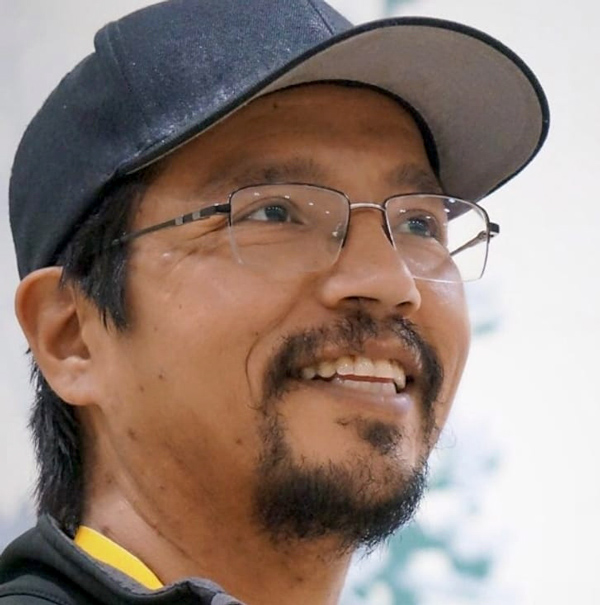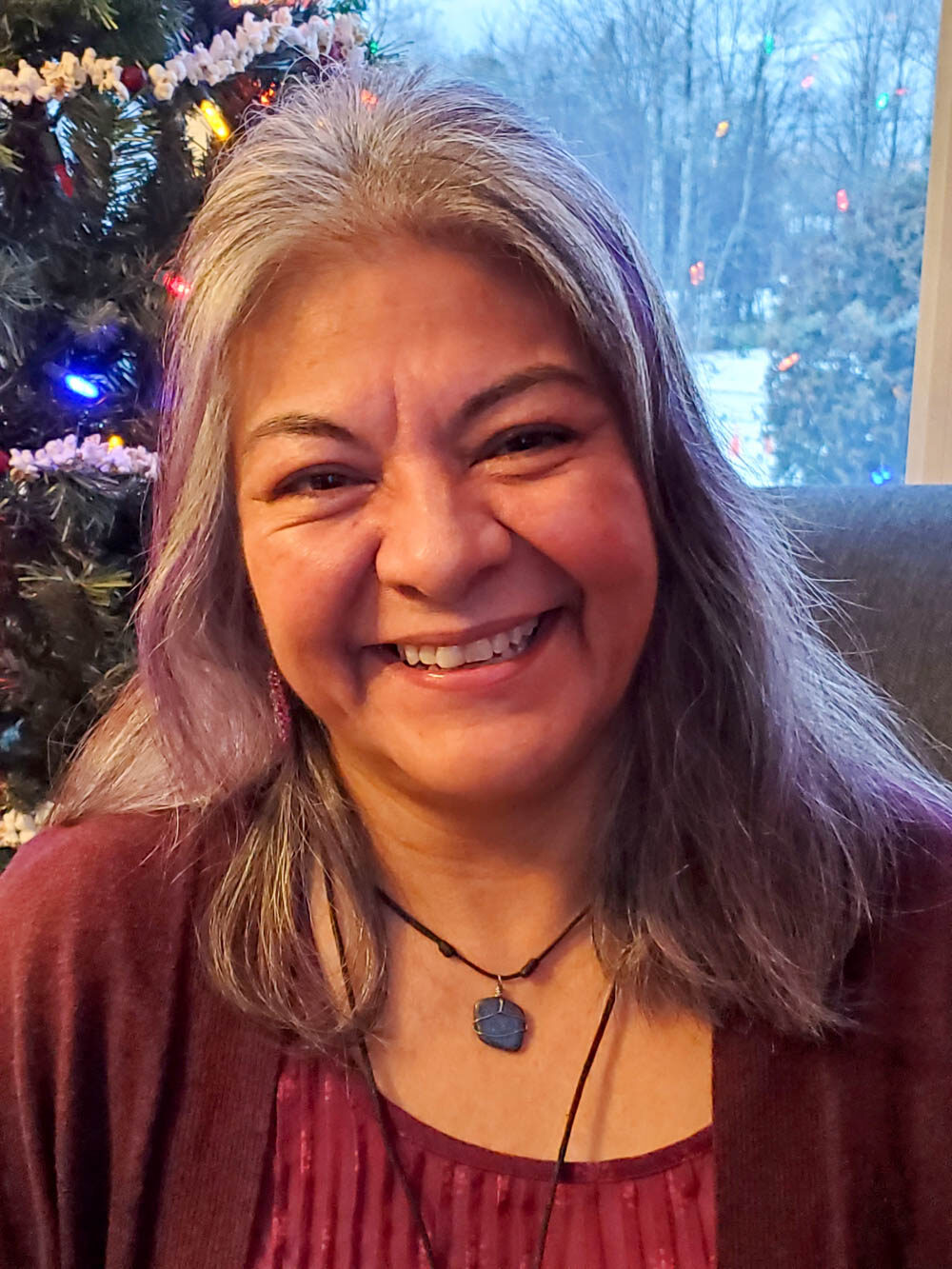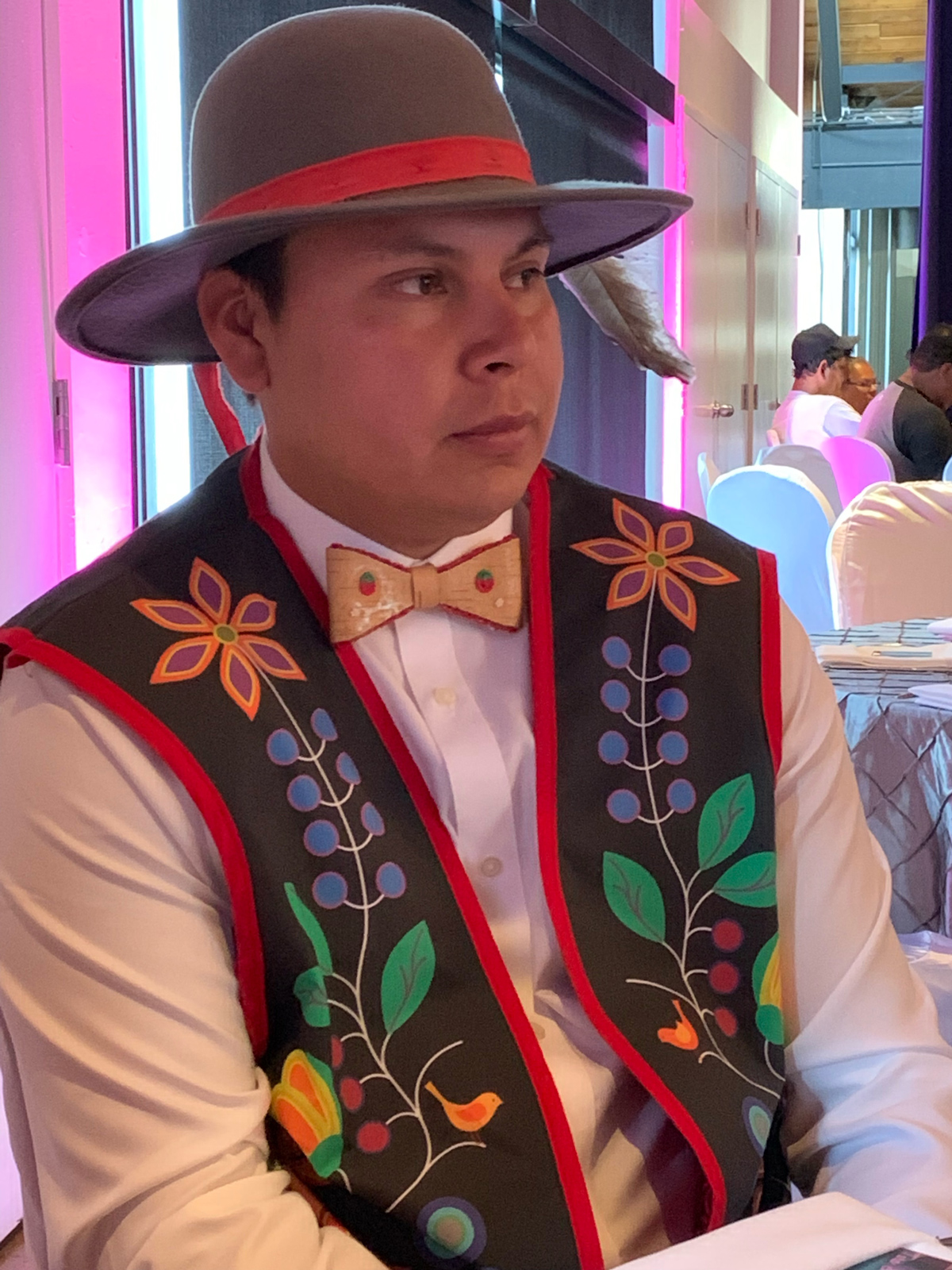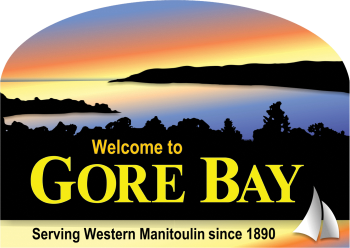SHEGUIANDAH FIRST NATION—There are five candidates for chief and 13 candidates for the three council seats for the Sheguiandah First Nation election, which takes place on Saturday, December 9.
Running for chief are Jason R.K. Aguonie, Elvis Mishibinijima, Xoë Peltier Roy, Ruby Thompson and Nevada Waindubence.
Vying for the council positions are Jake Agoneh, Alison (Alley Cat) Aguonie, Orville (Bugsy) Aguonie, Emma Chokomoolin, Joanne Fox, Carolyn Pickford, Lisa Sagutch, Darren Shawanda, Nathan Shawanda, Ruby Thompson, Shalyne Thompson, Carrie Waindubence and Matthew Waindubence.
Jason Aguonie
Jason Aguonie has recently returned to his home community with his four children and was welcomed with a nomination to run for chief of Sheguiandah First Nation, an honour he has humbly accepted.
Mr. Aguonie, who drives for AJ Bus Lines, has worked as a heavy equipment operator for the past 22 years.
He cites concerns with a lack of transparency, accountability and involvement in band membership in the decision-making processes as some of the key reasons he chose to run for the top job.

“This will change under my leadership with the direction of membership,” he says.
“The biggest issue at the moment is the disbursement of the annuities claim,” Mr. Aguonie says. “If elected chief, I will ensure that 100 percent of this settlement will be disbursed to our members, both on- and off-reserve.”
The candidate for chief said he will fight for Sheguiandah’s treaty rights and land claims (Heywood Island, the Lewis farm and French River No. 13).
“Community safety and more assistance for the elders and youth will be a priority,” he continues. “Further, the building of a new multi-purpose building will be pursued. This building will be centrally located and will meet the needs of our members for recreation and community gatherings.”
Mr. Aguonie says economic development needs to be Sheguiandah First Nation’s priority. “This will create employment and generate much-needed income for Sheguiandah First Nation members, development of our two farms (Charlton and Stoneman), build an industrial park and pursue tourism.”
The candidate also hopes to create a new housing strategy to meet the new and changing needs of community members that includes building a new subdivision on the water tower hill. “Further, we will secure funding for an independent community living building for our elders.”
“Together, we can change how Sheguiandah First Nation tackles issues in a more positive and proactive approach,” Mr. Aguonie says.
Elvis Mishibinijima
Incumbent Sheguiandah First Nation Chief Elvis Mishibinijima looks back on his first term at the head of the council table with humility and some satisfaction, having ensured greater safety for his community thanks to new pedestrian signs and a lowering of the speed limit on Highway 6 where it passes through his community.
“That was a two-year project,” he said. “We were ignored by the previous transportation minister, but with the new minister in charge things are finally moving.”
Mr. Mishibinijima said that he takes a proactive, rather than reactive approach to leadership. “That has often been an issue in the past,” he said. Over the course of the past couple of years he said he has been heavily engaged in setting up the policies and procedures that underpin financial stability.
“We need to create the capacity to get people the help they need,” he said. That capacity-building must start in the band offices, getting qualified people in place who have the skills and knowledge to provide the supports the community needs. “We can’t run the staff ragged,” he said. “There are only so many hours in a day.”

Also on the financial front, Mr. Mishibinijima said that he plans to continue with the financial management board, putting in place the best practices for financial management.
“Another big issue is a band rep for child and family services, that is going to be key,” he said. “That was put in place by the previous leadership and it is something we need to continue—we have to see it through with a high priority.”
Mr. Mishibinijima noted that he was under no illusion that building capacity would be an easy task. “There is a lot of competition out there, other agencies, other Nations,” he said.
Complicating the issue of finding the skilled people to deliver services is the current rental market. “With COVID, so many people moved to the Island and took up all the rental spaces,” he said. “You can’t bring in outside resources because you have nowhere for them to live. It isn’t helping that they are bringing in all these immigrants.”
When it comes to one of the largest elephants in the room, the question of the disbursement of Robinson Huron Treaty (RHT) annuity settlement monies, Mr. Mishibinijima expressed dismay at the suggestion that a chief, or even council, could simply make those decisions.
“This has to be community-driven,” he said. “This is not something that is in the hands of the chiefs or the councils—it is a community decision.”
He noted that both the RHT and the Manitoulin Project (UCCM islands claim) must be focussed on the collective benefit of the nations. “This will be a community decision, not chief and council, not a committee, but the community who will decide,” he said. “That is our way, to look forward to seven generations’ benefit. To do otherwise is against everything we have been taught.”
Food security is another key issue in this election, noted Mr. Mishibinijima. “Food bank usage is up 38 percent from last year,” he noted. “We still have a community cupboard, but it needs the resources to meet the need.”
Mr. Mishibinijima said that all things are currently pointing to a Conservative government taking power in the next couple of years. “Conservatives have not been what you could call ‘Anishinaabe friendly’,” he said. “They are talking cuts across the board.”
When it comes to global warming, Mr. Mishibinijima said that he finds it amusing. “Green initiative? When 61 percent of the contributions to greenhouse gases come from the one percent, it is only 39 percent for the rest of the 99 percent of us. We are doing our part.”
When it comes to transparency, Mr. Mishibinijima notes that many of the negotiations that take place have to be confidential if they are going to make any progress. When it comes to land claim issues, they are a long process. “Look at the French River negotiations,” he said. “They date back to 1980 when they were first brought up. “Here it is 2023 and they are still not done—but we are working on it.”
Xoë Peltier-Roy
In the heart of the upcoming First Nation chief elections, a dedicated candidate fervently advocates for a transformative vision to nurture unity and progress within the community. With a steadfast commitment to fostering change, Xoë Roy has outlined a comprehensive strategy to address pressing issues and cultivate a brighter future.
Reflecting on the community’s current status, Ms. Roy acknowledges the unique success and challenges Sheguiandah First Nation faces. While celebrating achievements, there’s a recognition that barriers like a lack of cohesion, difficulties with substance abuse, crime and lateral violence among community members impede joint success. Essential staff education and a call for transparency emerge as pivotal points for change. The chief’s role is crucial in guiding the community towards collaboration and shared success.
A beacon of proactive leadership and community dedication, candidate for chief Xoë Roy, who has served two impactful terms as the Youth Council Chief, is a testament to visionary leadership and tangible change. Her tenure witnessed a dynamic period of transformation, marked by substantial fundraising endeavours that injected vitality into her community’s initiatives. Notably, her initiative in amplifying traffic signage contributed to enhanced safety. At the same time, the ambitious revamping of a basketball court and the community pool breathed new life into recreational spaces, fostering a sense of pride and unity among the residents. This candidate’s track record echoes their commitment to proactive measures that uplift the community and create spaces for growth, recreation, and communal gathering.

When asked about community involvement in decision-making, Ms. Roy emphasized the necessity of transparency while respecting confidentiality concerns. Plans include various communication channels, such as Zoom links and newsletters, to engage the community effectively. Transparent agendas and broadcasting council meetings aim to bridge the gap between leadership decisions and community awareness.
The candidate prioritizes the creation of a youth centre. Recognizing the pivotal role of youth in shaping the future, Ms. Roy highlights the need for engagement and resources to empower the next generation. Her vision encompasses providing a space and engaging activities and mentorship to nurture future leaders and address prevalent challenges faced by young members.
“Our young people are going to be the next chiefs, council members, caretakers of the land,” Ms. Roy told The Expositor.
At the core of Ms. Roy’s strategy lies teamwork, valuing diverse perspectives and skills. Active listening and precision in decision-making are highlighted as vital components to bring the community together towards shared goals.
When discussing core values, the candidate pointed to five principles guiding their leadership style: accountability, self-awareness, passion for youth, bridging generational gaps, and a commitment to fostering change. Each value is a compass, steering the candidate towards a leadership style rooted in responsibility, empathy, and a drive for sustainable progress.
As the campaign gains momentum, Ms. Roy’s vision for a more united, empowered Sheguiandah First Nation community resonates, promising a transformative journey towards a brighter future for all community members.
Ruby Thompson
Ruby Thompson cares deeply for her community of Sheguiandah First Nation and wants to work with and help community members in the future. Ms. Thompson has put her name forward for both the position of chief, and for a council seat, in the upcoming election to take place this Saturday, December 9.
“I consider myself an ideas person and I guess this is what prompted me to put my name forward for both chief and council,” said Ms. Thompson. “My idea is to look at what is working in the community, make any changes needed to make improvements or be part of changing what is not working.”
“I would like to help in improving on things that need this and where there is a gap in services, funding and communication,” said Ms. Thompson. “This goes along with accountability and transparency to the community. If I am elected whether it be for chief or a councillor seat I want to help work toward that.”

“I consider myself a team player,” said Ms. Thompson. “I think I would be a good person as chief or on council because I have empathy and compassion for the community and its members. I want to help bring the community closer together.”
“We all know there will be bumps on the road, and you can’t please everyone, but we can all help make improvements for the majority of the residents in the community,” said Ms. Thompson. “And it is important that the young people, as they become young adults, are made to feel empowered know who they are as Sheguiandah citizens.”
“In my work experience over the years I have worked with babies to adults,” said Ms. Thompson. “And I have a lot of experience and skills working with committees and boards.”
Ms. Thompson has run for a councillor seat in two previous Sheguiandah elections. “I have been nominated twice previously to run in elections so this will be my third try, this time for both chief and council.”
Ms. Thompson whose mother is from Wiikwemkoong Unceded Territory, has ties to Aundeck Omni Kaning, having moved to Sheguiandah as a young adult and accessed school funding to pursue a career in nursing.
“I went to college in Sault Ste. Marie, which started my journey down the health and education path,” continued Ms. Thompson. “After this I came back to the Island and worked at the Manitoulin Centennial Manor in Little Current for a while then I went to Cambrian College to take the Native Community Care Counselling and Development program.”
“I am now working at the Early Years Centre in Sheguiandah as a community health representative, which has been in operation for about three years now,” said Ms. Thompson. “I started here on October 2.
“I had been away at Laurentian University (Sudbury) where I graduated with Honours Cum Laude, with a Bachelor of Arts in Indigenous Studies. I completed a four-year program within three years. I then worked back in my community as a health lead and near the end of COVID in January 2022 I took a long-distance program in Arts Therapy. I have finished my course work and am currently working through placement and a research project to complete the program through the Toronto Art Therapy Institute and work towards getting a licence for my own practice.”
“I tend to be very involved in the community. I attend meetings, community consultations or events taking place in the community. I like to be kept involved,” said Ms. Thompson.
Ms. Thompson is also very family oriented. She and her husband have three sons and a daughter.
Nevada Waindubence
As the proud father of five boys, Nevada Waindubence has thrown his hat into the ring for chief of Sheguiandah First Nation.
“I decided to move my family back home to Sheguiandah First Nation three years ago and raise them here,” he said. “I’m proud of our community and honoured to be nominated for chief.”
Mr. Waindubence said that he believes his “youth, experience, communication and focus will guide our community in a direction to better accommodate our goals as a community and hearing our youth, elders but most importantly everyone’s concerns.”
Transparency is a key element in Mr. Waindubence’s campaign, and he said that he commits to being fully transparent about ongoing treaties, negotiations and meetings and will better distribute information that is provided.

“Regarding the Robinson Huron Treaty and Manitoulin Project Claims (the UCCM Islands claim) I intend to propose new economic development, infrastructure plans, proposals and oversee projects closely,” he said. “I would like to propose our existing multipurpose round house be finished and would put forward proposals for new elders’, youth centres, mental health and addictions buildings.” In addition, he said he would build and refurbish new and existing roadways “to meet the highest quality standards available.”
On the economic front, Mr. Waindubence said that development of the ‘Stoneman’s’ farm property would be a priority for future considerations and business.
His ambitious plans include the design of Manitoulin Island’s “first multi-purpose complex with pool, arena and gym, with plans to open to the public and thereby creating revenue for the community and future events.”
Also on his radar is the purchase of an established grocery store chain, design casino, bingo hall and new band administration building.
Mr. Waindubence envisions offering invitations to other not-for profit and government-funded organizations for future business accommodations, entering negotiations for a new police building.
He notes that Indigenous tourism is the fastest growing industry in Canada, and proposes that it would be “extremely beneficial to develope our own tourism department and within our lakeshore space.”
Housing is also a key priority, and the creation of more major housing projects for Sheguiandah’s growing population is extremely important.
“I believe education is among the top three priorities with our community ethics,” said Mr. Waindubence. “We need to promote our culture, language and uphold our identity as Anishinabek. We need to stop accommodating the bare minimum to get by. Raise our needs for all our school attendees. From establishing a daycare within our community, to every student from junior Kindergarten to university.”
“In conclusion, I aim to be a better leader, more responsive, proactive and a present chief within our community to meet needs for events, activities and emergencies. I hope you can envision a new start. I will represent ourselves to the highest degree of standards among all Anishinabek Nations across Turtle Island. Trust our youth leadership to guide Sheguiandah First Nation to a better tomorrow.”





